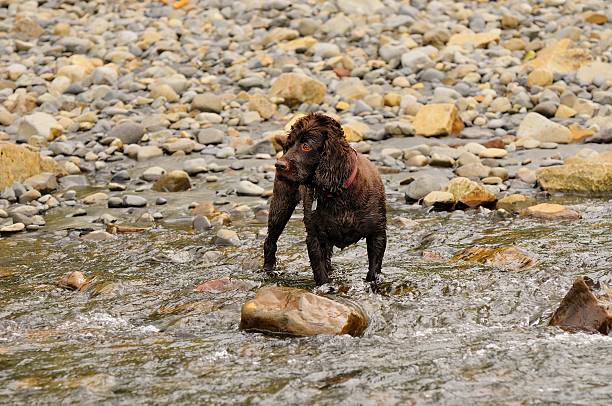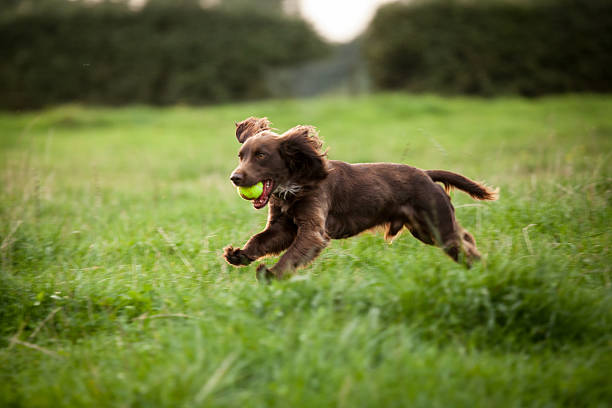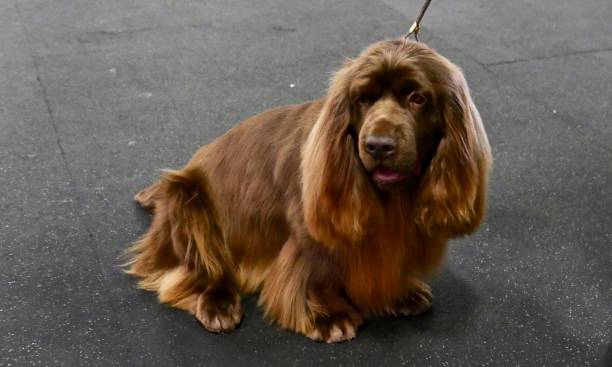Boykin Spaniel

Breed History:
The Boykin Spaniel is a true American breed, developed in South Carolina in the early 20th century. It originated when a small stray spaniel-type dog named “Dumpy” was adopted by a banker named Alexander White, who sent it to his hunting partner, Whit Boykin, for training. The dog showed natural talent in flushing and retrieving birds.
By crossing Dumpy with breeds like the American Water Spaniel, Springer Spaniel, Cocker Spaniel, and Chesapeake Bay Retriever, Boykin developed a compact, multi-skilled hunting dog ideal for the swampy terrain and boat travel of the Southern U.S. The breed was officially recognised by the AKC in 2009 and is the state dog of South Carolina.
|
Gender |
Height |
Weight |
|
Male |
39-46 cm |
13-18 kg |
|
Female |
36-43 cm |
11-16 kg |
Size: Medium
Life Expectancy: 10–15 years

Breed Appearance:
The Boykin Spaniel is a compact, well-balanced dog with a wavy to curly coat and a confident, friendly expression. Its ears are long, floppy, and feathered, and its eyes are typically amber or yellow, giving a distinctive look.
The coat ranges from rich liver to dark chocolate brown, with moderate feathering on the ears, chest, legs, and tail. The body is slightly longer than tall, and the tail is typically docked in the U.S.
Breed Type – Sporting / Flushing Spaniel:
The Boykin is a versatile gundog, bred to flush and retrieve waterfowl and upland game birds. It works well in both the field and water, with a keen nose and strong work ethic.
At home, the Boykin is gentle, friendly, and eager to please, making it an excellent companion dog for families and active individuals alike.

Training:
Boykins are intelligent, biddable, and eager to learn, making them relatively easy to train. They respond well to positive reinforcement, praise, and consistency.
Early socialisation is important, as is channelling their energy into activities like field training, agility, obedience, or retrieving games. They aim to please and typically form close bonds with their handlers.
Health & Care:
Overall healthy, but may be prone to:
-
Hip dysplasia
-
Exercise-induced collapse (EIC)
-
Eye conditions (like cataracts and PRA)
-
Ear infections (due to floppy ears and water exposure)
Responsible breeders screen for genetic issues. Regular vet visits, a balanced diet, and routine ear cleaning are essential to keep them healthy and active.

Living Conditions:
The Boykin Spaniel is adaptable but does best in homes with space to exercise. While it can live in apartments with sufficient daily activity, it thrives in suburban or rural settings, especially with access to water.
Boykins are great with children and other dogs, making them ideal for active families. They do best in homes where they can be involved and not left alone for long hours.
Exercise:
This breed is energetic and athletic, requiring at least 60–90 minutes of daily physical and mental activity. Ideal exercises include:
-
Fetch or swimming
-
Hiking and long walks
-
Field work or scent games
-
Dog sports like agility or dock diving
They are happiest when given a job and regular interaction with their people.
Grooming:
Grooming needs are moderate:
-
Brush 2–3 times per week to prevent matting
-
Trim feathering if needed, especially around ears and feet
-
Clean their ears regularly to avoid infections
-
Bathe occasionally, especially after swimming or hunting
-
Maintain dental hygiene and nail trims
Despite the wavy coat, shedding is moderate and manageable with upkeep.

Advantages:
-
Friendly, affectionate, and family-oriented
-
Versatile hunting and sporting companion
-
Trainable and intelligent
-
Compact and portable
-
Loves water and outdoor activities
-
Balanced temperament with a strong work ethic
Disadvantages:
-
Needs regular exercise to avoid boredom
-
Can develop separation anxiety if left alone
-
Prone to ear infections and some genetic issues
-
Moderate grooming requirements
-
High prey drive—may chase small animals
-
Requires early socialisation for best manners

